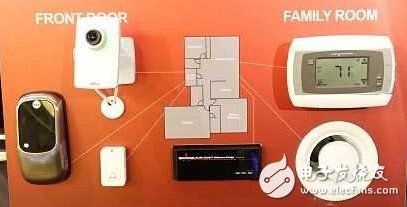Since the word wearable has become popular, new startups and brand manufacturers are competing to showcase wearable devices such as smart glasses, smart watches and fitness wristbands, and actively seize market opportunities. Undoubtedly wearable technology will quickly become the most popular next-generation information products. Focused attention. However, wearable technologies that are in the early stages of development still face many limitations and challenges. Especially when the market is optimistic that the wearable device will rewrite the consumer technology map, what obstacles will affect its growth? How will the relevant industry respond and break through?

Figure 1: The future of the popular smart wearable device concept map
In fact, since 2014, many large manufacturers have invested in the research and development of wearable devices. Smart watches and sports bracelets are the product development direction that the industry focuses on. Samsung exhibited the upcoming smart watch at CES this year. The Apple Apple Watch launched in April also attracted the buying tide. The Xiaomi (Mi) sports bracelet hit the market with a low-cost strategy, which also created a lively scene.
According to the Juniper Research research report of the market research organization, the wearable device market will grow three times in 2018, from 19 million units to 60 million units. Juniper Research also predicts that wearable devices will evolve toward M-type in the next few years, and one type will become more and more complex, just as smart watches combined with measuring various physiological information, but also as an extension of smart phones. And has call alert, music playback and access to a variety of applications. Or a professional wearable device developed in combination with medical related fields, the measurement accuracy is relatively high, and the measured data can be actually used as a basis for doctors' diagnosis and treatment; while the other type attracts consumers at a low price, but More functional products than Yangchun.
In addition, according to market research firm IDC, the market for wearable devices is expected to grow from 19.6 million units in 2014 to approximately 45.7 million units in 2015, with an annual growth rate of 133.4%. By 2019, we will see 126 million units, and the five-year average compound growth rate (CAGR) will reach 45.1%.
The extent to which products are popular with consumers and the optimism of market-adjusted units on the development of the wearable device market seem to predict that the wearable device market will be a new field to help manufacturers create the next wave of revenue, so not only terminal devices Manufacturers, component manufacturers, and IC design operators are all targeting product development in wearable devices.
Smart watches are integrated into smart families
The market regulators believe that the main applications of wearable devices are sports bracelets, smart watches or medical-related measuring devices. Recently, the most popular ones are smart watches. James Bruce, global marketing director of the ARM mobile market, is also optimistic that smart watches will become the first choice for wearable devices. "Watch products will obviously be the main application of this technology. Now we are at the beginning of this growth market."
However, compared with other wearable devices, smart watches are obviously more like auxiliary tools for smart phones. The functions of smart phones can also be seen on smart watches, unlike the functions of wearable medical devices. Focus on measuring and monitoring various physiological information.
With the gradual expansion of the Internet of Things (IoT) application, mobile phones have entered the smart home and become the remote control tool for smart home systems. Not only that, mobile phones have also become the remote control for home appliances. Can a smart watch as a smart phone accessory become a member of a smart home application like a mobile phone? That is to say, consumers in the future can also control air conditioning, lighting, etc. through smart watches. Rich Nelson, senior vice president of marketing for Broadcom's Broadband Communications and Connectivity Group, believes the answer is yes.
This is due to the purpose of the Internet of Things and networking for everything. Since smart watches are an extension of smart phones, natural smart watches should also be used as control devices for smart homes. More importantly, even if smart watches have a new direction in the future, they are no longer the 'accessories' of smart phones, and they can be connected to many smart home devices.

Figure 2: Future smart watches are expected to become another remote control device for smart homes.
However, it is worth noting that as an auxiliary device for smart phones, it also poses certain challenges for smart watches to enter smart homes. Nelson said that whether it is Apple or Samsung, or smart watches using iOS or Android systems, it can only be connected with smart phones of their own brands, so it is necessary to connect with gateways (Smartways) and smart TVs in smart homes. , lighting systems, air-conditioning and other equipment connections, and even further control, it is necessary to further develop relevant application software, firmware, and even in the case that the standard specifications common to smart homes have not yet been released, the current smart home control system is also relatively closed, each The manufacturer has its own system, and the smart watch does not mean that it can be imported smoothly.
Power Adapter,Universal Power Adapter,Usb Power Adapter,67W Usb-C Power Adapter
Guang Er Zhong(Zhaoqing)Electronics Co., Ltd , https://www.poweradapter.com.cn